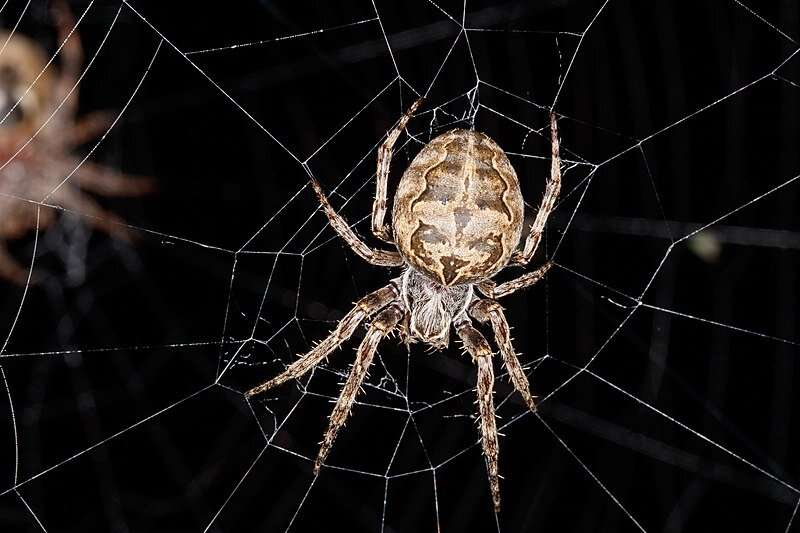February 15, 2022 report
Spider that uses its web to expand its hearing capabilities (Update)

A team of researchers affiliated with several institutions in the U.S. has found that a species of spider uses its web to expand its hearing capabilities. They have posted their findings on the bioRxiv preprint server.
Prior research has shown that some species of spiders "hear" using tiny, sensitive hairs on their legs, and many types of spiders can feel web vibrations using mechanosensitive slit organs caused by captured insects, alerting them to the arrival of a meal. In this new effort, the researchers have found that at least one type of spider, Larinioides sclopetarius, uses its web to expand its hearing capabilities.
Suspecting that L. sclopetarius, also known as gray cross or bridge spiders, were using their webs in unusual ways, the researchers collected many (N=76) samples and brought them into their lab. There, they set up boxes that the spiders used as scaffolding to build their webs. The researchers then developed a means for directing sound at the web without also striking the spiders. They found that the spiders reacted to sounds that made their web vibrate slightly—somewhat like the tympanic membrane in the human ear. Those vibrations were transferred to the strain sensitive slit organs on the spider's legs, which the spider could feel. It reacted by crouching or flattening its body, as if it were hearing the sounds.
Additional testing showed that the spiders could "hear" sounds from 3 meters. And they could make out differences in the sounds they heard as well. They responded differently, for example, to sounds that came from predators than they did for those that were prey. The researchers note that by using the web as an expanded form of ear drum greatly expanded the range of sounds the spiders could hear. Typically, spiders can only detect relatively loud sounds from a relatively close source via leg hairs. They note further that the webs the spiders build are large in proportion to their body size—in some cases, up to 10,000 times as large—a size that greatly increases their hearing.
More information: Jian Zhou et al, Outsourced hearing in an orb-weaving spider that uses its web as an auditory sensor (2021). bioRxiv, DOI: 10.1101/2021.10.17.464740
© 2022 Science X Network




















